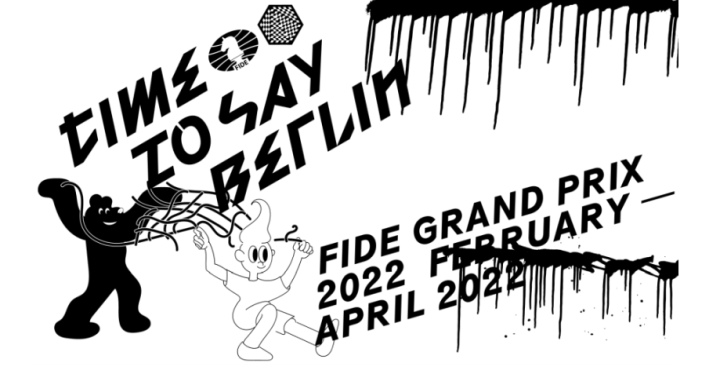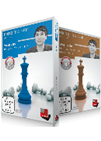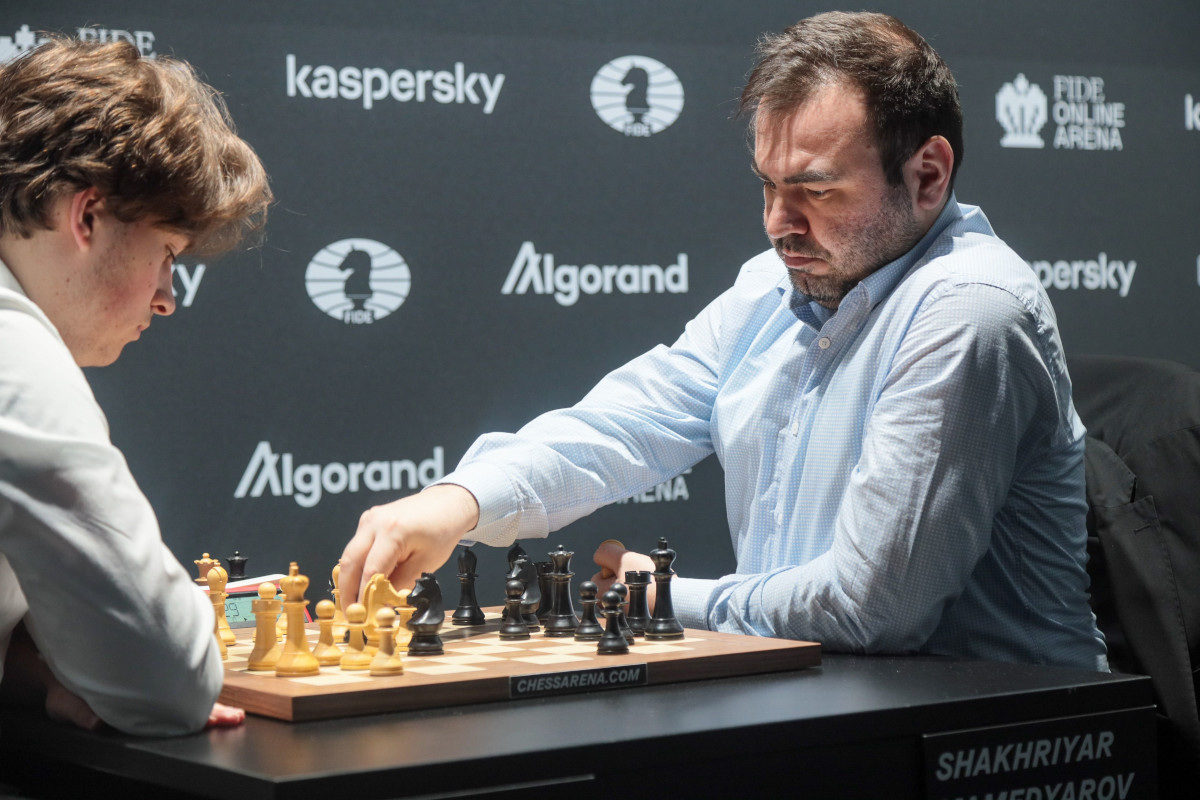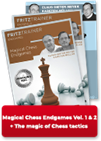Favourites prevail
 Now that we know that Hikaru Nakamura and Richard Rapport won the coveted Candidates spots granted by the FIDE Grand Prix, the surviving players at the third leg in Berlin are only fighting for prize money and rating points. For Wesley So and Shakhriyar Mamedyarov, two of the most likeable elite players in the circuit, this was enough motivation to beat Sam Shankland and Vincent Keymer in the tiebreakers of the tournament’s preliminary stage.
Now that we know that Hikaru Nakamura and Richard Rapport won the coveted Candidates spots granted by the FIDE Grand Prix, the surviving players at the third leg in Berlin are only fighting for prize money and rating points. For Wesley So and Shakhriyar Mamedyarov, two of the most likeable elite players in the circuit, this was enough motivation to beat Sam Shankland and Vincent Keymer in the tiebreakers of the tournament’s preliminary stage.
 Wesley So published two new opening DVDs: 1.b3, the so called Nimzo-Larsen-Attack, for White and his black secrets in the modern Italian. Get them in a package and save money!
Wesley So published two new opening DVDs: 1.b3, the so called Nimzo-Larsen-Attack, for White and his black secrets in the modern Italian. Get them in a package and save money!While So got a 1½-½ victory over Shankland, Mamedyarov saw his young opponent bouncing back in the rapid section to take the match to blitz tiebreakers. As Keymer explained later on, his lack of experience against top opponents in blitz prevented him from putting up a real fight, as he lost both games and was knocked out of the tournament.
Mamedyarov mentioned that he thought Keymer was the strongest player in the pool during the classical phase, and that the youngster from Mainz has the potential to eventually reach a 2800+ Elo rating.

Vincent Keymer facing Shakhriyar Mamedyarov
Mamedyarov 3 - 1 Keymer
It was a fighting struggle in the battle of generations between Mamedyarov and Keymer. All four games ended decisively, and only one of them saw the Azerbaijani getting a somewhat ‘clean’ victory. It all started with Shakh going for his usual early g-pawn push.
12.g4 is, of course, a novelty. In the previous encounter that reached this position, Radoslaw Wojtaszek played the sensible 12.Ne5 against Keymer himself.
A principled player, Keymer did not take long to grab the pawn with 12...Nxg4. From that point on, Mamedyarov, as he has done so many times in the past, showed how strong he is when he gets the initiative — a feature especially useful in rapid chess.
Soon after, Shakh had both rooks and both bishops pointing at the black king.
There is not much Keymer could do to try to hold this losing position.
The 17-year-old, who has worked extensively with Peter Leko, got an outside passed pawn in the second rapid game.
 In over 4 hours in front of the camera, Karsten Müller presents to you sensations from the world of endgames - partly reaching far beyond standard techniques and rules of thumb - and rounds off with some cases of with own examples.
In over 4 hours in front of the camera, Karsten Müller presents to you sensations from the world of endgames - partly reaching far beyond standard techniques and rules of thumb - and rounds off with some cases of with own examples.
Black is ready to create a passer on the queenside, but thanks to his more active king and rook (33.Ra1 was played in this position), Keymer eventually managed to level the score after showing great technique from a materially balanced position.
In the first 5-minute encounter, out of a Semi-Slav, Mamedyarov outplayed his young opponent in the middlegame and had no trouble converting his advantage to again get ahead on the scoreboard. Yet again in a must-win situation, Keymer failed to find a few tactical tricks in the rematch, as he blundered into a mating net to lose the game and the match.
So 1½ - ½ Shankland
A fierce competitor, Shankland was visibly disheartened after his loss against So. For a second tournament in a row, he almost made it into the knockout despite being the third-highest rated player in his pool. Only three weeks ago, the Californian failed to even reach a tiebreak after wild swings in the game between Etienne Bacrot and Dmitry Andreikin saw the latter getting what for much of the game seemed like a very unlikely first-place clinching victory.
Shankland had the white pieces in the first game and, despite finding himself a pawn down in the middlegame, fought hard in the ensuing complex struggle.
After 38.Nxb7 Bxf2 39.Kf1 Rxb2, So needed fifteen more moves to get the full point. In the diagrammed position, the cold-blooded engines suggest 38.b4, when White saves the b-pawn, getting therefore more chances to create counterplay.
In the second game, Shankland in fact got winning chances with the black pieces. So’s pragmatism and technical ability, however, allowed him to save a draw and win the match, thus gaining the right to face Amin Tabatabaei in the tournament’s semifinals.
Links


















 Now that we know that Hikaru Nakamura and Richard Rapport won the coveted Candidates spots granted by the FIDE Grand Prix, the surviving players at the third leg in Berlin are only fighting for prize money and rating points. For Wesley So and Shakhriyar Mamedyarov, two of the most likeable elite players in the circuit, this was enough motivation to beat Sam Shankland and Vincent Keymer in the tiebreakers of the tournament’s preliminary stage.
Now that we know that Hikaru Nakamura and Richard Rapport won the coveted Candidates spots granted by the FIDE Grand Prix, the surviving players at the third leg in Berlin are only fighting for prize money and rating points. For Wesley So and Shakhriyar Mamedyarov, two of the most likeable elite players in the circuit, this was enough motivation to beat Sam Shankland and Vincent Keymer in the tiebreakers of the tournament’s preliminary stage.





